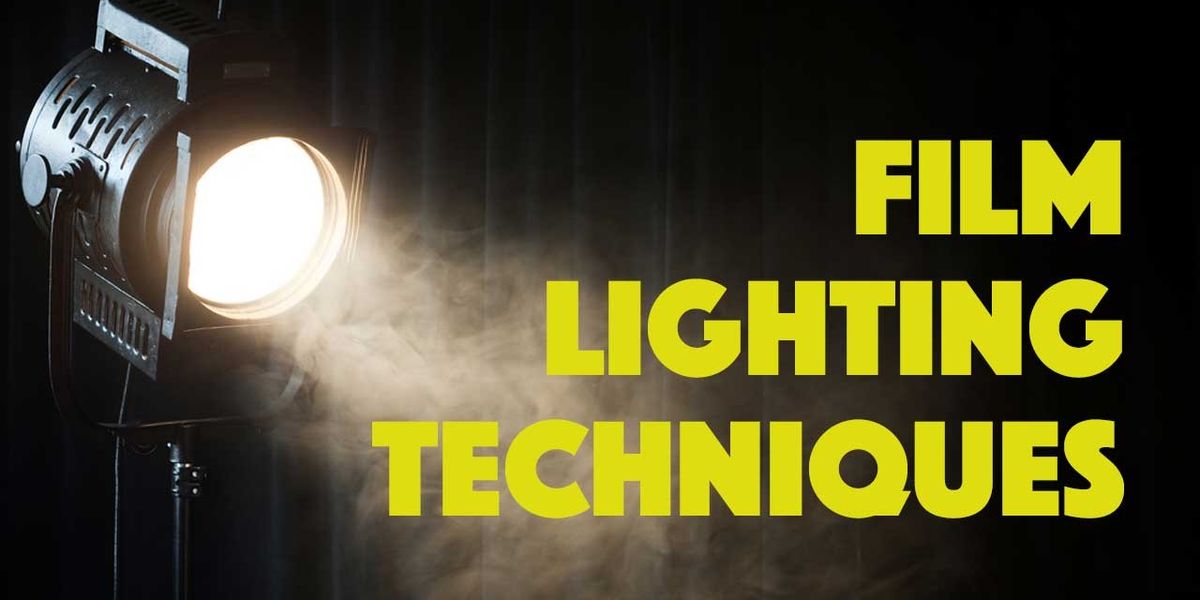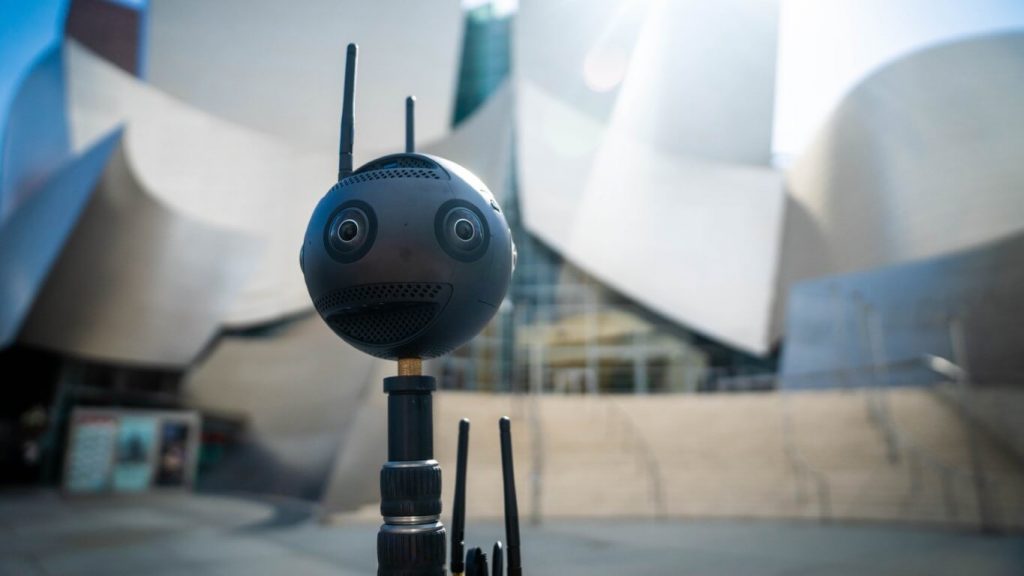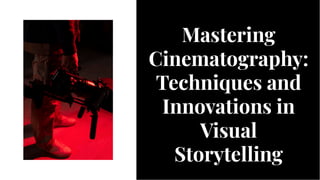Cinematic Landscapes: The Art of Visual Storytelling
The allure of cinema lies not just in its storytelling or characters, but also in its ability to transport audiences to different times and places. One of the most powerful tools filmmakers use to achieve this transportive magic is the landscape. Cinematic landscapes are more than mere backdrops; they are integral parts of the narrative, capable of conveying emotion, theme, and atmosphere, enriching the story far beyond the capabilities of dialogue alone.
The Role of Landscapes in Film
Landscapes in cinema serve multiple functions, often manipulating the viewer's perception and emotions. They can set the tone of a film, establish context, and even serve as a character in their own right. Directors and cinematographers use landscapes to immerse audiences fully, offering a visual experience that words alone cannot fully encapsulate.
Consider the haunting, rolling hills and wide-open spaces of the American West in "The Searchers" by John Ford. The vastness of Monument Valley serves as both a beautiful and isolating stage, reflecting the film’s themes of exploration and the moral complexities of its characters. The landscape is not just a setting but a dynamic participant in the narrative, echoing the internal struggles of the protagonist, played by John Wayne.
A Historical Perspective on the Use of Landscapes
The use of landscapes in cinema has evolved significantly over the course of film history. In the early days of Hollywood, landscapes were often painted backdrops, serving as static, two-dimensional spaces that lacked depth and authenticity. However, as film technology advanced, so did the capability to capture true landscapes, spurred on by filmmakers who understood the power of real-world settings.
The transition can be seen in directors like David Lean, whose films such as "Lawrence of Arabia" and "Doctor Zhivago" utilized expansive panoramic shots to emphasize the epic scope and emotional gravity of their narratives. Lean’s use of the desert in "Lawrence of Arabia" is not only visually stunning but also metaphorically resonant, emphasizing themes of solitude, endurance, and the clash of cultures.
Contemporary Cinematic Landscapes
In the modern era, the use of landscapes in film has become even more sophisticated, with filmmakers employing digital technology to enhance or entirely create digital vistas. Despite the rise of computer-generated imagery, there remains a powerful impact in capturing real-world landscapes, a strategy employed by directors like Christopher Nolan and Terrence Malick.
Nolan, for example, is renowned for his preference for practical effects and real locations, as seen in films like "Inception" and "Interstellar." In "Interstellar," the otherworldly landscapes of Iceland serve as stand-ins for alien planets, providing a tactile realism that anchors the film’s high-concept plot in a believable reality.
On the other hand, Terrence Malick is celebrated for his poetic approach to cinema, where the landscape is as much a character as the actors themselves. Films like "The Tree of Life" and "Days of Heaven" are lush tapestries of natural beauty, inviting the audience to become contemplative participants in the story. Malick’s work exemplifies the idea that landscapes can evoke a spiritual and existential response, elevating the film to a meditative experience.
The Emotional Impact of Landscapes
The emotional resonance of landscapes emerges from their ability to evoke memories, feelings, and associations. Just as a particular song can elicit a specific emotion or memory, so too can cinematic landscapes trigger a visceral reaction in audiences. Rolling waves crashing against jagged rocks might evoke a sense of despair or tumult, while a serene meadow bathed in golden sunlight could inspire hope or tranquility.
Take, for instance, the desolate yet stunning landscapes of the Arctic in Joe Penna's "Arctic." The harsh, unforgiving environment is integral to building the narrative’s tension and despair, mirroring the protagonist’s struggle for survival. The barren ice fields become synonymous with isolation and resilience, amplifying the film’s emotional core.
Furthermore, landscapes can serve as metaphors for a character’s emotional state. In "Brokeback Mountain," directed by Ang Lee, the majestic Wyoming vistas symbolize the intense yet forbidden love between the protagonists. The mountains provide a sanctuary for the characters, but they are also a reminder of the barriers and societal constraints they face.
As we delve deeper into the world of cinematic landscapes, it becomes evident that they are not just static entities but dynamic elements that can significantly enhance storytelling. They connect the audience to the narrative on a sensory level, enriching the emotional depth and thematic complexity. This marriage of story and scenery continues to define and redefine the art of filmmaking, reminding us of cinema’s unique ability to capture and convey the imagination's landscapes.
The Intersection of Geography and Narrative
The significance of cinematic landscapes goes beyond their aesthetic appeal; they also shape and are shaped by the narrative. Filmmakers often choose locations that reflect the inner journey of their characters or the thematic undercurrents of the story. This choice of landscape is a powerful storytelling device, enhancing the narrative's depth and complexity.
For instance, in Alejandro González Iñárritu’s "The Revenant," the harsh wilderness becomes an extension of the protagonist’s arduous quest for revenge. The vast, untamed American frontier reflects the primal nature of the storyline and the central character, portrayed by Leonardo DiCaprio. The relentless landscapes underscore the film's themes of survival and endurance, reinforcing the visceral struggle depicted onscreen.
Similarly, in Wong Kar-wai’s "In the Mood for Love," the bustling, crowded streets of 1960s Hong Kong add layers of complexity to the narrative. The urban landscape captures the intimate, clandestine essence of the love story, subtly highlighting themes of entrapment and longing. The cramped, pulsating city becomes a character in its own right, shaping the protagonists’ world and their constrained emotions.
Landscapes as Cultural Symbols
Cinematic landscapes are also powerful cultural symbols that evoke specific societal and political contexts. They can represent cultural identity, serve as allegories, or comment on social issues, unearthing the layers of meaning embedded within the narrative.
In films like Hayao Miyazaki’s "Spirited Away," the vibrant, fantastical landscapes are deeply infused with Japanese cultural motifs, reflecting the country’s cultural ethos and mythological heritage. The intricate, dreamlike settings interpret Shinto and Buddhist principles, embracing themes of transformation and identity within a uniquely Japanese context. The landscapes in Miyazaki’s films transcend mere fantasy, becoming cultural narratives that speak to both Japanese and global audiences.
Furthermore, in Alfonso Cuarón’s "Roma," the director uses the urban landscape of 1970s Mexico City to explore themes of class and social inequality. The sprawling metropolis, with its stark contrast between wealth and poverty, serves as a backdrop that subtly underscores the societal tensions and personal struggles faced by the protagonist. Cuarón’s intimate knowledge of these real locations allows for an authenticity that resonates deeply, turning the landscape into a lens through which viewers can examine complex cultural dynamics.
Technological Advances and Landscape Depictions
The advent of new technologies has opened up unprecedented opportunities for filmmakers in the depiction of landscapes. Advanced cinematography, drone technology, and CGI have vastly expanded the possibilities of what can be shown on screen, allowing for breathtaking and innovative visual storytelling techniques.
The use of drones, for example, has made it possible to capture landscapes from angles and perspectives previously unimaginable, providing sweeping views and dynamic shots that amplify the cinematic experience. Films like "The Grand Budapest Hotel" by Wes Anderson utilize these technologies to create meticulously crafted worlds that add a storybook quality to the narrative. Anderson’s precision and composition transform the landscapes into whimsical tableaux that communicate narrative cues and emotional resonance.
Meanwhile, CGI allows filmmakers to create entirely new worlds, blurring the lines between what is real and what is imagined. James Cameron's "Avatar" is a notable example of how digital technology can craft immersive landscapes that feel as palpable as natural ones. The rich, elaborate world of Pandora becomes a vital part of the viewing experience, engaging audiences with its vibrant biodiversity and stunning visuals. The digital landscape in "Avatar" becomes an integral part of the film’s environmental message, showcasing the potential of CGI not merely as a tool for spectacle but as a means of storytelling.
The Psychological Impact of Cinematic Landscapes
Psychologically, cinematic landscapes have a profound impact on the audience's immersion and interpretation of the film. The depiction of landscapes can invoke a sensory response, transporting viewers into the world of the film and developing a psychological environment that resonates on a deeper level.
Horror films, for example, effectively use landscapes to evoke fear and anxiety. In Stanley Kubrick’s "The Shining," the isolated Overlook Hotel, surrounded by ominous mountains and vast, empty snowfields, is instrumental in creating the film’s unsettling atmosphere. The claustrophobic interiors and the expansive, eerie exteriors reinforce the sense of dread and impending doom, drawing audiences into a shared psychological space of suspense and horror.
Conversely, landscapes in films such as Peter Jackson’s "The Lord of the Rings" trilogy evoke feelings of awe and wonder. The varied terrains of New Zealand were used to depict the diverse landscapes of Middle-earth, crafting a visual journey that complements the epic narrative. The breathtaking, idyllic settings captivate the audience, facilitating an emotional connection to the fantasy world while amplifying the thematic battles of good versus evil and home versus exile.
As cinematic landscapes continue to evolve with advancements in technology and creative exploration, their role in shaping narrative and emotional impact remains pivotal. From culturally significant motifs to psychological influences, the landscape serves as an enduring tool in the filmmaker's arsenal, a canvas for the vivid imagination and complex human experiences. In the worlds they create, we find not only entertainment but reflection, identity, and, often, a deeper understanding of our place in the vast tapestry of existence.
The Language of Color and Light in Cinematic Landscapes
Color and light play crucial roles in enhancing the visual storytelling of cinematic landscapes. They can transform a setting, create mood, and influence the audience’s emotional response. Filmmakers meticulously choose color palettes and lighting techniques to complement the narrative's tone and themes, adding further layers of meaning to the landscapes.
In films like "Moonlight," directed by Barry Jenkins, the use of color is pivotal in shaping the film’s aesthetic and emotional resonance. The vibrant yet tender hues of the Miami landscape reflect the inner life of the protagonist, portraying a nuanced journey of identity and self-discovery. The play of light and shadow throughout the film subtly accentuates the themes of vulnerability and resilience, capturing the complex interplay between the physical environment and the character’s psychological landscape.
Similarly, in Denis Villeneuve’s "Blade Runner 2049," the bleak, dystopian landscapes are sculpted by a stark palette of muted tones and artificial lighting. The film’s visual design encapsulates a sense of desolation and foreboding, mirroring the existential themes of artificiality, memory, and identity. The masterful use of color and light in crafting the film's landscapes guides the viewer through a sensory experience, where every shadow and highlight conveys depth beyond the narrative itself.
Environmental Narratives Through Landscape
In addition to visual and emotional factors, landscapes in cinema often serve as vehicles for environmental narratives, illustrating the relationship between humans and nature. Films focusing on ecological themes use landscapes to reflect the consequences of human actions on the environment, sparking introspection and awareness among viewers.
"The Day After Tomorrow," directed by Roland Emmerich, employs dramatic landscapes to depict the catastrophic effects of climate change. The film’s visual portrayal of natural disasters and a transformed Earth raises awareness of the urgency of environmental issues. The landscapes become powerful symbols of nature’s wrath and resilience, seen through the fictive yet impactful lens of cinematic storytelling.
Conversely, in Hayao Miyazaki’s "Princess Mononoke," the landscapes are central to the story of conflict between industrialization and the natural world. The lush, animated forests serve as both battleground and sanctuary, embodying the delicate balance between humanity and nature. Through its enchanting landscapes, the film advocates for harmony and coexistence, encouraging viewers to reflect on the environmental stewardship of our own world.
Landscapes and Human Connection
Cinematic landscapes often explore the connection between humans and their environments, examining themes of belonging, alienation, and transcendence. These landscapes create physical and metaphorical spaces where characters navigate their identities and relationships, deeply engaging the audience in their emotional journeys.
In "Lost in Translation," directed by Sofia Coppola, the bustling and alienating landscape of Tokyo mirrors the isolation and cultural dislocation experienced by the protagonists. The city’s neon-lit streets and crowded spaces personify the emotional distance and disorientation of the characters. Yet, amidst the foreign landscape, they find moments of connection and introspection. The landscape acts as both a barrier and a bridge, a canvas on which personal transformation unfolds.
Terrence Malick’s "The New World" further explores this concept, using the lush, untouched landscapes of colonial America as a backdrop for an exploration of love and cultural clashes. The film delves into the idea of paradise lost, where the changing landscapes become a reflection of the evolving human experience. The cinematography captures the sublimity of nature and its profound influence on the characters’ lives and destinies, making the landscape integral to both narrative and emotional exploration.
The Future of Cinematic Landscapes
As filmmaking continues to evolve, so too will the depiction of landscapes, promising exciting new possibilities for visual storytelling. With advancements in virtual reality, filmmakers are beginning to explore immersive environments that allow audiences to experience landscapes in unprecedented ways. This technological evolution promises a deeper engagement with the narrative, where audiences do not merely observe but participate in the filmic world.
Moreover, the growing awareness and concern for environmental issues are likely to influence landscape portrayals in cinema, encouraging filmmakers to explore themes of ecological preservation and sustainable practices. As storytelling mediums expand, filmmakers will continue to push the boundaries of how landscapes are used to communicate complex, multifaceted narratives.
In essence, cinematic landscapes will remain a vital component of storytelling, bridging the visual and thematic elements that define great filmmaking. They are the landscapes not only of our imagination but of our past, present, and future. In their unfolding terrains, we discover narratives that resonate with our own lives, offering new perspectives on the world and our place within it. As each new film unspools, audiences will continue to journey into these crafted realms, forever captivated by the vistas of cinema's boundless creativity.



















Comments